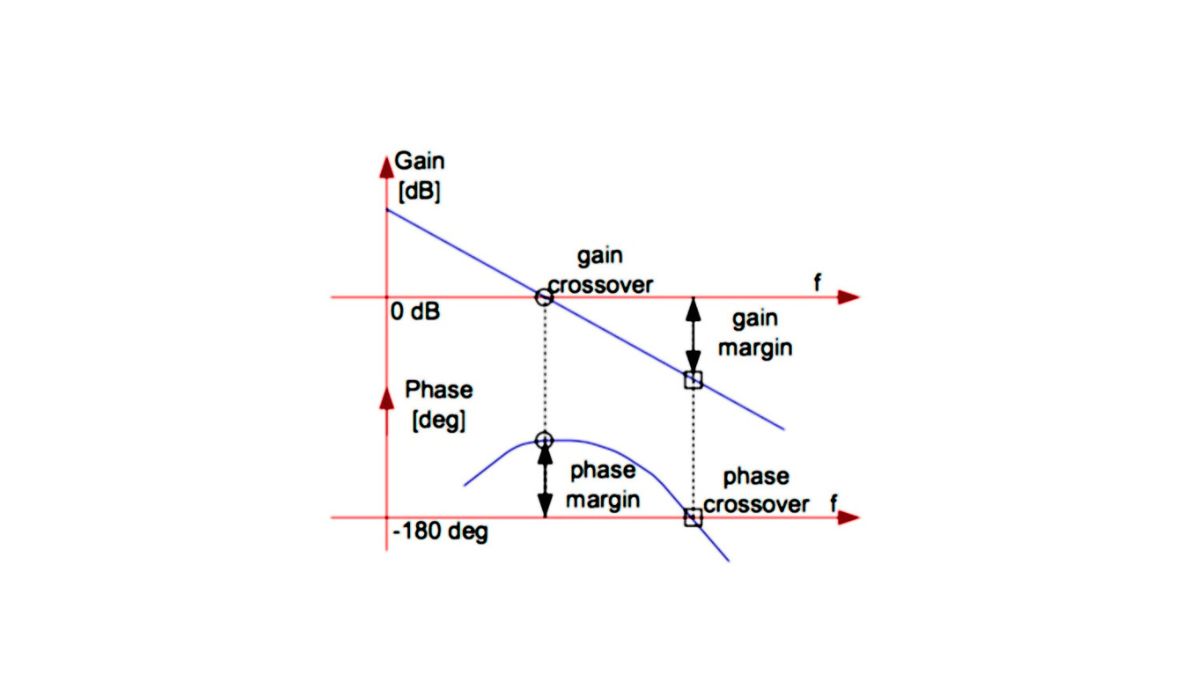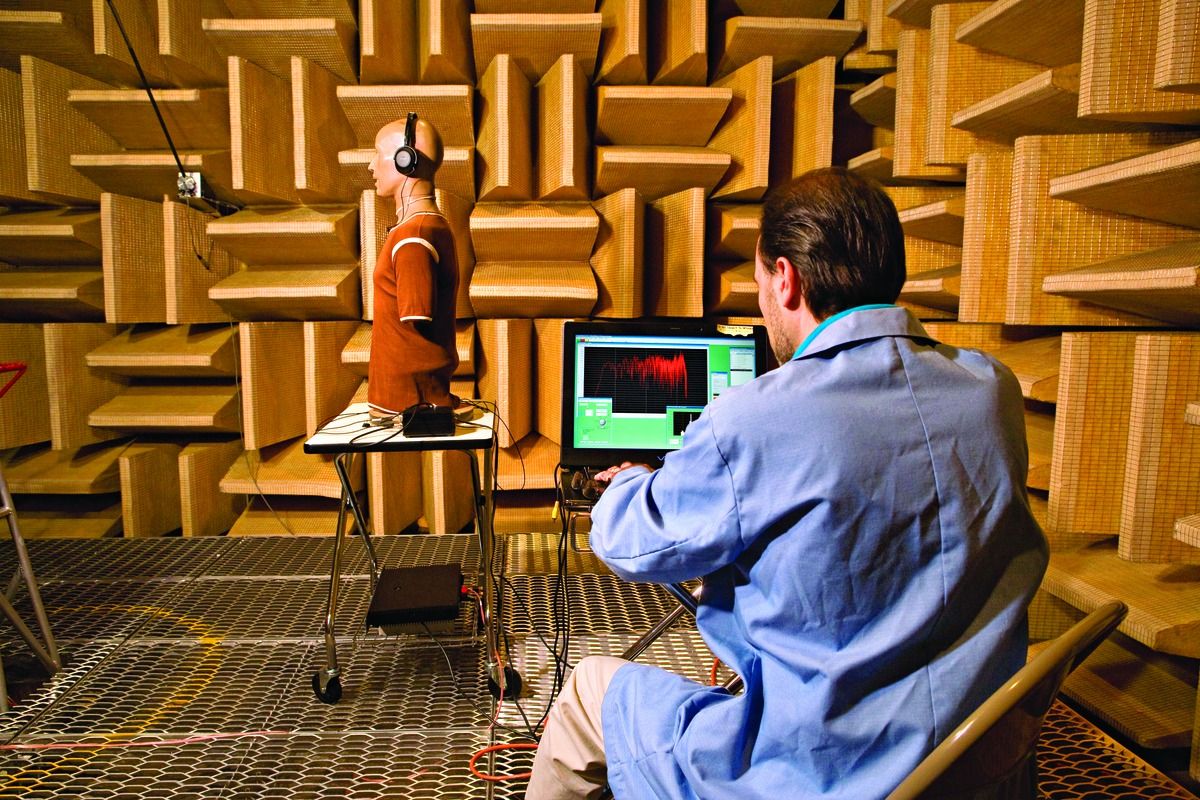Home>Events & Info>Frequency>What Is A Frequency Response


Frequency
What Is A Frequency Response
Published: February 18, 2024
Learn about frequency response and its importance in understanding the behavior of a system or device in relation to the frequency of a signal. Explore the concept of frequency and its impact on various aspects of technology and engineering. Gain insights into the significance of frequency in different applications.
(Many of the links in this article redirect to a specific reviewed product. Your purchase of these products through affiliate links helps to generate commission for AudioLover.com, at no extra cost. Learn more)
Table of Contents
Introduction
Understanding Frequency Response
The term "frequency response" is integral to various fields, including engineering, physics, and audio technology. At its core, frequency response refers to how a system, device, or component reacts to different frequencies within a given range. This concept is fundamental in understanding the behavior of systems that process or transmit signals, such as electrical circuits, audio equipment, and communication systems.
In the realm of audio technology, frequency response plays a pivotal role in determining the fidelity and tonal characteristics of speakers, headphones, microphones, and other audio devices. It directly influences the perceived quality of sound reproduction and recording, making it a crucial consideration for audiophiles, recording engineers, and sound system designers.
Understanding frequency response entails delving into the relationship between input and output signals across a range of frequencies. This involves analyzing how a system amplifies, attenuates, or distorts signals at different frequencies, providing valuable insights into its performance characteristics. By examining the frequency response of a system, engineers and designers can make informed decisions to optimize its functionality and achieve desired performance outcomes.
The significance of frequency response extends beyond the realm of audio technology. In fields such as telecommunications, control systems, and signal processing, a thorough comprehension of frequency response is essential for designing and optimizing systems to meet specific performance criteria. Whether it involves designing a communication network, developing a control system for industrial automation, or analyzing the behavior of electronic circuits, understanding frequency response is paramount.
As we delve deeper into the intricacies of frequency response, we will explore its importance, applications across diverse systems, methods of measurement, and its profound impact on various technological domains. Through this exploration, we aim to unravel the underlying principles of frequency response and shed light on its pervasive influence in modern engineering and technology.
Understanding Frequency Response
Frequency response is a fundamental concept that characterizes the behavior of systems in response to varying frequencies within a specified range. It serves as a crucial indicator of how a system processes input signals across the frequency spectrum, providing valuable insights into its performance characteristics. In the context of audio equipment, such as speakers and headphones, frequency response directly influences the tonal balance and fidelity of sound reproduction.
When examining frequency response, it is essential to consider how a system amplifies, attenuates, or distorts signals at different frequencies. This analysis enables engineers and designers to comprehend how the system’s output differs from its input across the frequency spectrum. The frequency response of a system is often depicted graphically, showcasing its amplitude or gain response as a function of frequency. This representation, commonly known as a frequency response curve, offers a visual depiction of the system’s behavior across the entire frequency range of interest.
Understanding frequency response involves grasping the concept of bandwidth, which refers to the range of frequencies over which a system exhibits a specified performance level. The bandwidth of a system is a critical parameter that influences its ability to accurately process signals within a defined frequency range. Moreover, the concept of phase response is integral to comprehending how a system’s output signals align with the corresponding input signals across different frequencies.
Frequency response is not limited to audio systems; it permeates various engineering disciplines, including telecommunications, control systems, and signal processing. In telecommunications, for instance, the frequency response of communication channels plays a pivotal role in determining the transmission characteristics of data signals. Likewise, in control systems, understanding the frequency response of feedback loops is essential for ensuring stability and optimal performance.
By gaining a profound understanding of frequency response, engineers and technologists can make informed decisions when designing and optimizing systems across diverse domains. Whether it involves fine-tuning the frequency response of a graphic equalizer to achieve a desired audio profile or analyzing the frequency-dependent behavior of a feedback control system, the concept of frequency response underpins numerous technological advancements and innovations.
Importance of Frequency Response
The importance of frequency response spans across a myriad of technological domains, exerting a profound impact on the design, performance, and functionality of diverse systems and devices. In the realm of audio technology, the frequency response of speakers, headphones, and microphones directly influences the perceived quality of sound reproduction. A flat and extended frequency response is indicative of faithful sound reproduction, ensuring that the audio output accurately represents the original input signals across the entire audible spectrum.
For audio enthusiasts, recording engineers, and sound system designers, the frequency response of audio equipment holds immense significance. It determines the tonal balance, clarity, and accuracy of sound reproduction, ultimately shaping the listening experience. As a result, meticulous attention is devoted to optimizing the frequency response of audio devices to deliver high-fidelity sound reproduction that faithfully captures the nuances of music and speech.
Beyond the realm of audio technology, frequency response plays a pivotal role in telecommunications, where it influences the transmission and reception of data signals. The frequency response of communication channels dictates the bandwidth available for transmitting information, thereby impacting the data transfer rates and overall communication efficiency. In the design of communication systems, understanding and manipulating frequency response is essential for achieving reliable and efficient data transmission across diverse media, such as optical fibers and wireless channels.
In the domain of control systems, the frequency response of feedback loops and control elements directly influences the stability and dynamic performance of automated processes. By analyzing and optimizing the frequency response of control systems, engineers can ensure precise regulation of industrial processes, robust disturbance rejection, and swift response to dynamic changes in operating conditions. This is particularly critical in applications such as robotics, automotive control systems, and industrial automation, where precise and reliable control is imperative.
Moreover, in the field of electronic circuit design, the frequency response of amplifiers, filters, and signal processing components significantly impacts the fidelity and integrity of signal processing and transmission. Engineers meticulously analyze and shape the frequency response of electronic circuits to meet stringent performance criteria, minimize distortion, and maximize signal integrity across diverse operating conditions and frequency ranges.
Overall, the importance of frequency response extends far beyond the realm of audio technology, permeating telecommunications, control systems, signal processing, and electronic design. By comprehensively understanding and optimizing frequency response, engineers and technologists can enhance the performance, reliability, and efficiency of a wide array of systems and devices, thereby driving technological advancements and innovation.
Frequency Response in Different Systems
The concept of frequency response manifests in diverse systems across engineering and technology, exerting a pervasive influence on their performance and functionality. In the realm of audio technology, the frequency response of speakers, headphones, and microphones significantly impacts the fidelity and tonal characteristics of sound reproduction. Audio equipment with a flat and extended frequency response is capable of faithfully reproducing the entire audible spectrum, ensuring that the nuances of music and speech are accurately conveyed to the listener.
Telecommunication systems rely heavily on frequency response to determine the transmission characteristics of communication channels. The frequency response of communication channels dictates the bandwidth available for data transmission, directly influencing data transfer rates and the overall efficiency of communication. Whether it involves wired communication channels, wireless networks, or optical fiber systems, understanding and optimizing frequency response is crucial for achieving reliable and high-speed data transmission.
Control systems, particularly those employed in industrial automation and robotics, heavily depend on the frequency response of feedback loops and control elements. The frequency response of control systems directly influences their stability, dynamic performance, and ability to regulate industrial processes with precision. By analyzing and shaping the frequency response of control systems, engineers can ensure robust disturbance rejection, rapid response to dynamic changes, and precise regulation of industrial processes, thereby enhancing operational efficiency and productivity.
Electronic circuits, including amplifiers, filters, and signal processing components, also exhibit distinct frequency responses that profoundly impact their performance. The frequency response of electronic circuits dictates their ability to process and transmit signals accurately across a specified frequency range. Engineers meticulously analyze and shape the frequency response of electronic circuits to minimize distortion, maximize signal integrity, and meet stringent performance criteria in diverse applications, ranging from audio amplification to data signal processing.
Moreover, in the realm of signal processing and digital communications, the frequency response of filters, equalizers, and modulators plays a pivotal role in shaping the spectral characteristics of signals. By manipulating the frequency response of signal processing components, engineers can tailor the frequency spectrum of signals to meet specific requirements, such as noise reduction, channel equalization, and spectral shaping for modulation and demodulation.
Overall, frequency response permeates various systems and technologies, including audio equipment, telecommunications, control systems, electronic circuits, and signal processing. By comprehensively understanding and optimizing frequency response in these diverse domains, engineers and technologists can enhance the performance, reliability, and efficiency of systems and devices, thereby driving technological advancements and innovation across a wide array of applications.
Measuring Frequency Response
Measuring frequency response is a critical aspect of evaluating the performance and characteristics of systems across diverse technological domains. In the realm of audio technology, the frequency response of speakers, headphones, and microphones is meticulously assessed to ascertain their fidelity and tonal balance. One of the primary methods for measuring frequency response in audio equipment involves employing specialized test signals, such as swept sine waves or pink noise, to stimulate the system across the entire frequency spectrum of interest.
During the measurement process, the output signals from the system under test are captured and analyzed to determine the amplitude and phase response across different frequencies. This information is then used to construct a frequency response curve, depicting the system’s behavior in terms of gain or attenuation as a function of frequency. Additionally, the phase response is often represented to provide insights into the alignment of output signals with the corresponding input signals across the frequency spectrum.
In the context of telecommunications, measuring the frequency response of communication channels is crucial for assessing their transmission characteristics and bandwidth allocation. Engineers utilize techniques such as frequency domain reflectometry and network analyzers to evaluate the frequency-dependent attenuation, dispersion, and distortion characteristics of communication channels. By analyzing the frequency response of communication channels, engineers can optimize data transmission rates and mitigate the impact of channel impairments on signal integrity.
Control systems rely on frequency response measurements to assess the stability, gain margin, and phase margin of feedback loops and control elements. Engineers employ methods such as frequency response analysis and Bode plots to characterize the dynamic behavior of control systems across different frequencies. By scrutinizing the frequency response, engineers can identify potential instabilities, optimize control system parameters, and ensure robust performance in regulating industrial processes and automated systems.
Measuring the frequency response of electronic circuits involves employing network analyzers, spectrum analyzers, and impedance analyzers to evaluate their gain, phase, and impedance characteristics across the frequency spectrum. This enables engineers to assess the fidelity of signal processing, minimize distortion, and optimize the frequency-dependent performance of electronic circuits in applications such as audio amplification, signal conditioning, and data transmission.
Overall, the measurement of frequency response is essential for comprehensively evaluating the performance and characteristics of systems and devices in audio technology, telecommunications, control systems, and electronic design. By employing specialized measurement techniques and analysis tools, engineers and technologists can gain valuable insights into the frequency-dependent behavior of systems, thereby enabling informed decision-making and optimization to meet specific performance criteria.
Applications of Frequency Response
The concept of frequency response finds diverse applications across a wide array of technological domains, playing a pivotal role in shaping the performance and functionality of systems and devices. In the realm of audio technology, the frequency response of speakers, headphones, and audio amplifiers directly influences the fidelity, tonal balance, and spatial characteristics of sound reproduction. By meticulously engineering the frequency response of audio equipment, manufacturers can tailor the sonic characteristics to meet specific preferences, ranging from flat and neutral response for studio monitoring to enhanced bass or treble emphasis for consumer audio products.
Telecommunication systems heavily rely on frequency response to determine the transmission characteristics of communication channels. Understanding and manipulating the frequency response of communication channels is crucial for optimizing data transfer rates, mitigating signal distortion, and ensuring reliable transmission of voice, data, and multimedia content. By shaping the frequency response of communication channels, engineers can achieve efficient data transmission, minimize signal degradation, and adapt to diverse transmission media, such as optical fibers, coaxial cables, and wireless communication links.
In the domain of control systems, frequency response analysis is essential for evaluating the stability, dynamic performance, and robustness of feedback control loops and automated processes. By scrutinizing the frequency response of control systems, engineers can identify potential instabilities, optimize control system parameters, and ensure precise regulation of industrial processes, robotic systems, and automated machinery. This is particularly critical in applications where stringent performance criteria, rapid response to dynamic changes, and disturbance rejection are imperative.
Electronic circuits, including amplifiers, filters, and signal processing components, exhibit distinct frequency responses that significantly impact their performance in various applications. By engineering the frequency response of electronic circuits, engineers can tailor their behavior to meet specific requirements, such as audio amplification, data signal processing, and wireless communication. This enables the design of electronic systems that exhibit optimal signal integrity, minimal distortion, and precise frequency-dependent characteristics across diverse operating conditions and applications.
Moreover, in the realm of signal processing and digital communications, the manipulation of frequency response is instrumental in shaping the spectral characteristics of signals. By employing techniques such as equalization, filtering, and modulation, engineers can tailor the frequency response of signals to meet specific requirements, such as noise reduction, channel equalization, and spectral shaping for efficient modulation and demodulation in wireless communication and data transmission systems.
Overall, the applications of frequency response span across audio technology, telecommunications, control systems, electronic circuits, and signal processing, exerting a pervasive influence on the design, performance, and functionality of systems and devices. By comprehensively understanding and optimizing frequency response in these diverse domains, engineers and technologists can enhance the performance, reliability, and efficiency of a wide array of technological systems, thereby driving advancements and innovation across various applications.
Conclusion
Frequency response, a fundamental concept in engineering and technology, permeates diverse domains and exerts a profound influence on the performance and characteristics of systems and devices. From audio technology to telecommunications, control systems, electronic circuits, and signal processing, the concept of frequency response plays a pivotal role in shaping the behavior and functionality of various technological systems.
Understanding frequency response entails delving into the relationship between input and output signals across a range of frequencies. This analysis provides valuable insights into how systems amplify, attenuate, or distort signals at different frequencies, enabling engineers and designers to make informed decisions to optimize performance characteristics.
The importance of frequency response is evident in its impact on audio fidelity, telecommunications efficiency, control system stability, and electronic circuit performance. By comprehensively understanding and optimizing frequency response in these diverse domains, engineers and technologists can enhance the performance, reliability, and efficiency of systems and devices, thereby driving technological advancements and innovation across a wide array of applications.
Measuring frequency response is essential for evaluating the performance and characteristics of systems and devices in various domains. By employing specialized measurement techniques and analysis tools, engineers and technologists can gain valuable insights into the frequency-dependent behavior of systems, enabling informed decision-making and optimization to meet specific performance criteria.
The applications of frequency response span across audio technology, telecommunications, control systems, electronic circuits, and signal processing, exerting a pervasive influence on the design, performance, and functionality of systems and devices. By meticulously engineering the frequency response of systems and devices, engineers can tailor their behavior to meet specific requirements, ranging from audio fidelity and communication efficiency to precise control and signal processing.
In conclusion, the concept of frequency response serves as a cornerstone in modern engineering and technology, underpinning advancements and innovations across diverse domains. By unraveling the intricacies of frequency response and leveraging its principles, engineers and technologists continue to push the boundaries of technological capabilities, driving progress and innovation in an ever-evolving technological landscape.











